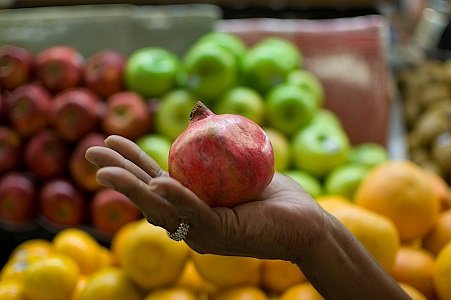(CNN) — If you’re craving fresh-baked bread, sweet strawberry jam, or the scent of seasonal flowers, you’re in luck. It’s now easier than ever to find your local farmers market, thanks to an online search tool from the USDA.
The searchable farmers market directory — complete with an interactive map — lets users dig up information on local food sources by filtering through more than 8,260 farmers markets by zip code, types of payment accepted, and even the products sold at the market.
But which farmers markets make the cut? The USDA requires that markets have two or more farm vendors selling their goods in the same, consistent location.
By these standards, the USDA reports that the number of farmers markets is on the rise, increasing by 180% from 2006 to 2014. The USDA credits this increase to hundreds of millions dollars in investments in these local food hubs.
And good news for those on government assistance: a growing number of farmers markets are also accepting EBT cards, or food stamps.
“Farmers markets engage people in food so they enjoy what they’re eating more,” said Alice Ammerman, a professor of nutrition in the UNC Chapel Hill Gillings School of Global Public Health, and Director of the Center for Health Promotion and Disease Prevention.
Interestingly enough, the produce at farmers markets isn’t necessarily healthier than fruits and vegetables found in larger supermarkets, according to Ammerman. The benefits of farmers markets are broader than nutrition. Social engagement with your neighbors as well as with the farmers behind the food. “This is especially true with children, who are more likely to try fresh produce if they actually meet the farmer.”
In fact, living closer to farmers markets is associated with lower child and adolescent obesity rates, according to 2011 analysis of children’s medical records from the Brody School of Medicine. This doesn’t mean that having a farmers market in your neighborhood keeps your family slim, only that the two are statistically related.
A glance at the map of farmers markets across the U.S. reveals where you live is still a big issue for access to the benefits that farmers markets afford. The majority of farmers markets are found in the eastern half of the United States and along the West Coast. Some states have very few farmers markets, such as Utah and Nevada, which each have only 40 markets in the directory. These numbers pale in comparison to New York, the reigning farmers market capital with 661 farmers markets in the state.
Why do some states have so few farmers markets? It all has to do with population density and how urban a state is, according to a USDA representative. New York City, for instance, has a population density of more than 27,000 people per square mile. On the other hand, Phoenix has a population density of approximately 2,900 people per square mile. Fewer people in one place means fewer customers for farmers, and less incentive to set up a farmers market.
If there isn’t a farmers market in your community, fear not. Local foods can still be found in chain grocery stores, restaurants and even schools, depending on where you live.
Ammerman notes that another major barrier to accessing local foods is the limited operational hours of farmers markets. She said the majority of farmers markets are only open one-half day or two half-days per week.
“Just because you can’t feed the whole world with farmers markets doesn’t mean they’re not sustainable or worth pursuing,” Ammerman said. “Farmers markets help to rebuild local systems that create jobs and business opportunities within communities.”
The-CNN-Wire
™ & © 2015 Cable News Network, Inc., a Time Warner Company. All rights reserved.
